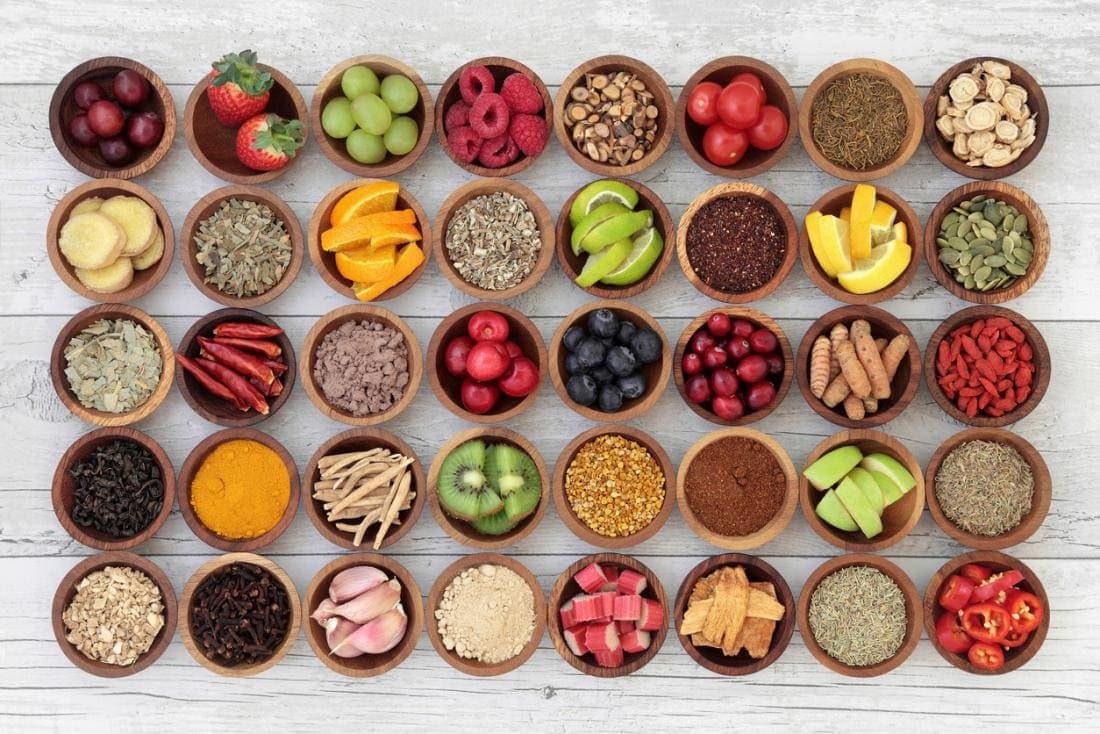Drinking Water
Most people are dehydrated each day because they underestimate how much water their body really needs and how much they actually drink in a day. The average person needs 2-3L of water each day. For a more personalized number you can take your body weight in pounds and have half of it in ounces of water. Ex. 200lbs=100oz minimum per day. When you drink water during a workout or any other time you are sweating it does not count towards your daily total because you are just replacing the sweat. You also need to replace each coffee or alcoholic beverage you take in with more water as well. It’s important to drink your water throughout the day, don’t try and fit all of it in after lunch because you forgot. Try drinking a glass of water as soon as you wake up, one after your coffee, one at work’s morning break etc.
Eat Slowly
One of the most important benefits of eating slowly is that it gives your body time to recognize that you’re full. It takes about twenty minutes from the start of a meal for the brain to send out signals of satiety. Most people’s meals don’t even last that long! Imagine the extra calories you could ingest simply because you didn’t allow your body time to register that it no longer required food. Now imagine the effect of those extra calories on your weight. Eating slowly also helps us feel more satisfied — which is different than just being “full”. When you slow down, savour a meal, pay attention to tastes and textures, and appreciate each mindful bite, you leave the table feeling good in your soul… even if all you ate was a baloney sandwich.
Getting Enough Protein
Protein helps replace worn out cells, transports various substances throughout the body, aids in growth and repair, control body fat/allowing optimal body composition, improve immune function, metabolism, satiety and overall performance. We need a small amount of protein to survive, but we need a lot more to thrive. For people doing high intensity training, protein needs might go up to about 1.4-2.0 g/kg (or around 0.64-0.9 g/lb) of body mass. Our hypothetical 150 lb (68 kg) person would thus need about 95-135 g of protein per day minimum. A simple way to track protein intake is using the palm of your hand. Women need one palm size and men need two palm sizes per meal.

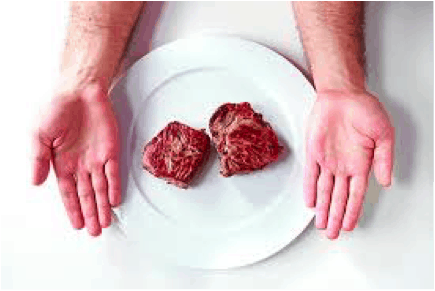
Not sure about the sources of protein? Check out the chart below:
Protein Food Options |
||
Lean Sources |
Secondary Options |
Supplements |
| Whole Eggs (omega 3)
Egg Whites Chicken (skinless, breast, thighs, legs, whole) Steak Lamb Salmon Lean Beef (ground, roasts) Turkey (ground, sausage, breast) Fish (sole, tilapia, tuna, sea bass, cod) Wild Meats (buffalo, elk, venison, emu, ostrich, bison) Shrimp, scallops |
Quinoa
Legumes (chick peas, black beans, kidney beans, navy beans) Nuts – almonds, cashews, hazel nuts, brazil nuts, walnuts Seeds – pine, chia Almond and Nut Butters Plain Greek Yogurt Cottage Cheese Almond Milk Spinach
|
Biosteel Whey Isolate Protein Supplement
Biosteel Advanced Recovery Protein Supplement
Branch Chain Amino Acids (BCAA) Supplement
|
Where Are Your Veggies?
You’ll have a hard time finding a reason not to consume fruits and vegetables each day once you realize their benefits:
- They are alkaline producing, which can help to preserve bone mass and muscle tissue.
- They are rich in antioxidants, vitamins, minerals, fibre, and phytonutrients.
- They contain lots of water to help you stay hydrated.
- Because fruits and vegetables have a high water and fibre content, they’re low in calories relative to their volume. Consuming them on a regular basis can result in a higher volume of food intake. Since humans consume a consistent volume of food, a high consumption of low calorie density foods can help to control overall food intake and manage body weight.
A higher level of fruit and vegetable consumption is associated with a lower incidence of:
Cardiovascular Disease
Colon Cancer
High Blood Pressure
High Blood Cholesterol
Prostate Cancer
Type 2 Diabetes
Obesity
Stroke
Eye Disease
Asthma
Cervical Cancer
Breast Cancer
Chronic Obstructive Pulmonary Disease
Endometrial Cancer
Gastric Cancer
Lung Cancer
Lymphoma
Osteoporosis
Ovarian Cancer
Pancreatic Cancer
Thyroid Cancer
It’s important to try and include veggies at each meal with the proper portion sizes. Women get one fist per meal and men get 2 fists per meal.


Did You Earn Your Carbs?
Although the fundamental process of digestion is the same, people differ in their tolerance and handling of carbohydrates. However, carbohydrate types also play an important role. When the diet consists of simple sugars and refined carbohydrates (which the body breaks down rapidly), one may notice elevations in blood triglyceride levels, bad cholesterol, and insulin resistance. On the other hand, carbohydrates that are digested and absorbed slowly, such as whole grains, fruits, and vegetables, it can help to control insulin response, energy levels, and body composition. Such unrefined, unprocessed, complex carbohydrate sources may reduce triglycerides and improve one’s cholesterol profile. Other benefits of a lower glycemic diet include increased vitamin and mineral intake, increased fiber intake, enhanced satiety, a higher thermic effect of feeding, and blood sugar control. The minimal recommended intake for carbohydrate is 130 grams per day for the general population, with the majority coming from vegetables and fruit. The amount of carbohydrate that should be consumed depends on body size and activity levels: bigger and/or more active people need more while smaller and more sedentary people require less. Intake is also dependent on dietary fat and protein intake. Having too low of a carb intake can actually breakdown your muscle mass, even when you are getting enough protein. It’s important to make sure you are eating vegetables throughout the day and having your complex carbohydrates around your workout, especially post workout meals.
Women need one small scoop of carbs, while men need two per meal.

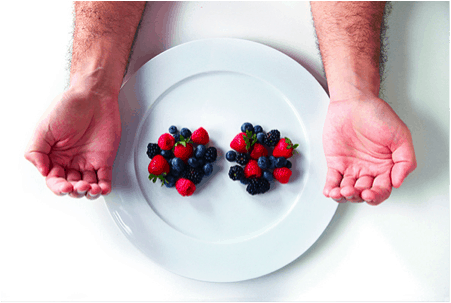
Looking for carb sources? Check out the chart below!
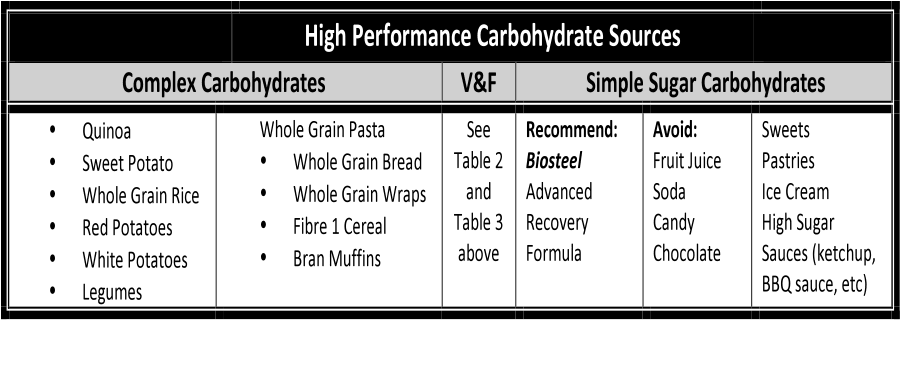
Enough Healthy Fats
In popular terminology, the monounsaturated (olive oil, avocados, peanuts and tree nuts) and polyunsaturated (flax and fish oil) fats are what most people refer to as “healthy fats.” Unhealthy fats are typically those that are industrially produced and designed to be non-perishable, such as:
- trans- fatty acids that appear in processed foods
- hydrogenated fats such as margarine (hydrogen is added to the fat chain to make a normally liquid and perishable fat into a solid and shelf-stable fat)
- most shelf-stable cooking oils (e.g. safflower, soybean, corn oil, etc.)
People are often concerned about excess dietary fat, but not getting enough “good” fats may also cause health problems. Fats exert powerful effects within the body. We need adequate fat to support metabolism, cell signalling, the health of various body tissues, immunity, hormone production, and the absorption of many nutrients (such as vitamins A and D). Having enough fat will also help keep you feeling full between meals.
Healthy fats have been shown to offer the following benefits:
Strong evidence
- Cardiovascular protection (though there is less evidence for protecting against heart failure)
- Improve body composition
- Alleviate depression
Average evidence
- Prevent cancers
- Preserve memory
- Preserve eye health
- Reduce incidence of aggressive behaviour
- Reduce ADHD and ADD symptoms
Women need one thumb per meal and men need two thumbs.
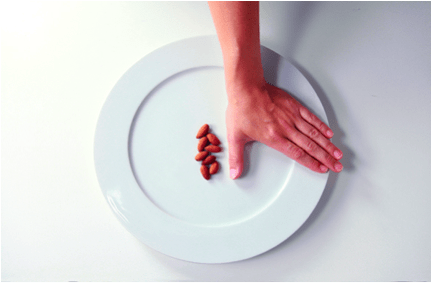

80/20 Rule: Cut Most Sugar & Junk Out!
The 80/20 rule is a great method to live your life by when it comes to your healthy eating habits. You want to stay on track with all the tips above for 80% of your week/meals, the other 20% is when you can take a little break to enjoy your guilty pleasures. The important thing is to make sure you have enough control to go back to the 80% right away! If you eat 5 meals/snacks a day that is 35 per week, if you were on track for 80% then 28 meals/snacks would be ‘perfect‘ and follow the information above while up to 7 can have a little variance. Whether that means you have a glass of wine with dinner 3x a week and have 1-2 desserts or going out to eat vs. making your own meals. Whichever way works for you and your goals is what you should focus on. Some people only use one day per week to have some fun or indulge on some foods, while others need to spread it out. If you want to step it up a notch you can try the 90/10, so only 3 meals/snacks a week would be outside the guidelines stated above.
Processed sugars and junk food should be restricted or cut out of your meal plan if you are wanting to live longer, feel better and lose weight. Refined sugar can be hidden in many foods if you are not paying attention, such as yogurts, granola, oatmeal, drinks (juice, tea, pop, alcohol etc.), sauces (ketchup, salad dressings, pasta sauce etc.) and any packaged or man-made foods. There are also the more obvious high sugar foods such as desserts like cookies, cakes, pies, doughnuts, milk chocolate candy bars etc. If you can cut out the above refined sugar sources or start making recipes yourself by not using raw sugar, but try baking with more natural sources like apple sauce, dates, honey or real maple syrup. Follow @coachkerri_depth for ideas, tips and recipes.
Plan Ahead & Have A Prep Day
So now that you know what a health meal should look like, a major component to seeing lasting results is planning ahead! It’s important to pick 1-2 days a week to prep your healthy meals as much as you need to so you can save time during the week when things can get hectic. In 5 simple steps you can have yourself on track each week:
- Look ahead: see what your week looks like and which day of the week you have open to complete the next few steps. (5 minutes)
- Make a menu: jot down ideas for your meals you will have this week so you have a list of what you need (15 minutes)
- Shop for ingredients: buy all ingredients you need for each meal this week (45 minutes)
- Cook for the week: this is when you make as many things ahead of time that you need. Cook all carbs like rice, quinoa or potatoes. Chop all veggies you plan to eat and cook the ones you need vs. eating them raw. Make any protein you need, bake chicken, slow cook a roast etc. (60-90 minutes)
- Store it conveniently: pack all food into convenient containers, whether you want them in meal sized ready to grab and go for lunch and snacks or bigger containers so you can easily warm up the food quickly for dinner. Try to have good seal and stackable containers so you can easily fit everything into your fridge.
Resources from Precision Nutrition
If anything above seems overwhelming or you have questions, feel free to email [email protected] to chat or set up a quick nutrition meeting to get yourself on track for a healthier lifestyle! Follow @coachkerri_depth for healthy tips and recipes.
Written by: Kerri Brown, Certified Trainer & Nutrition Coach

